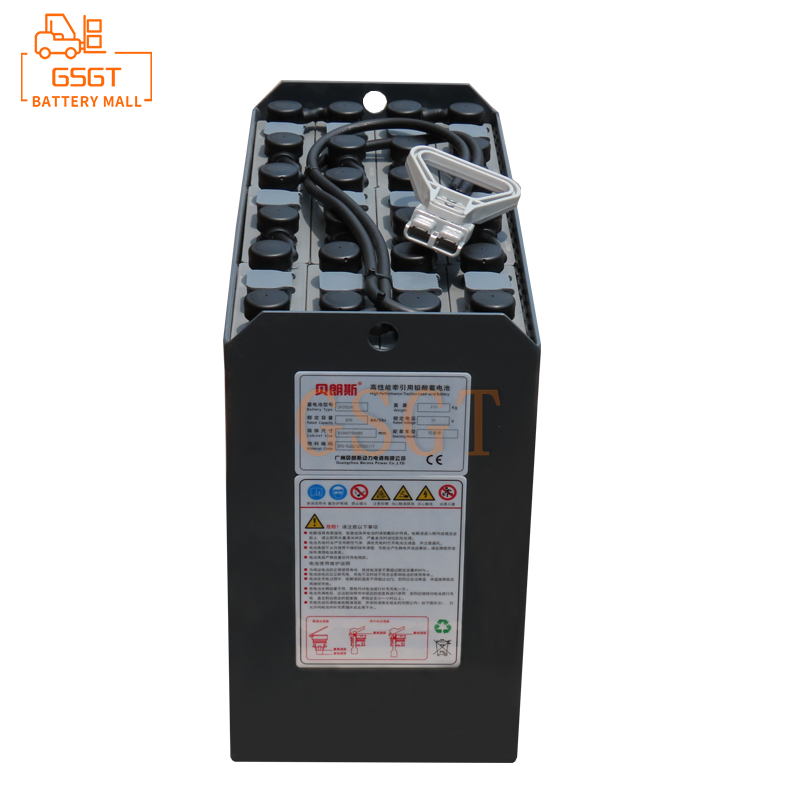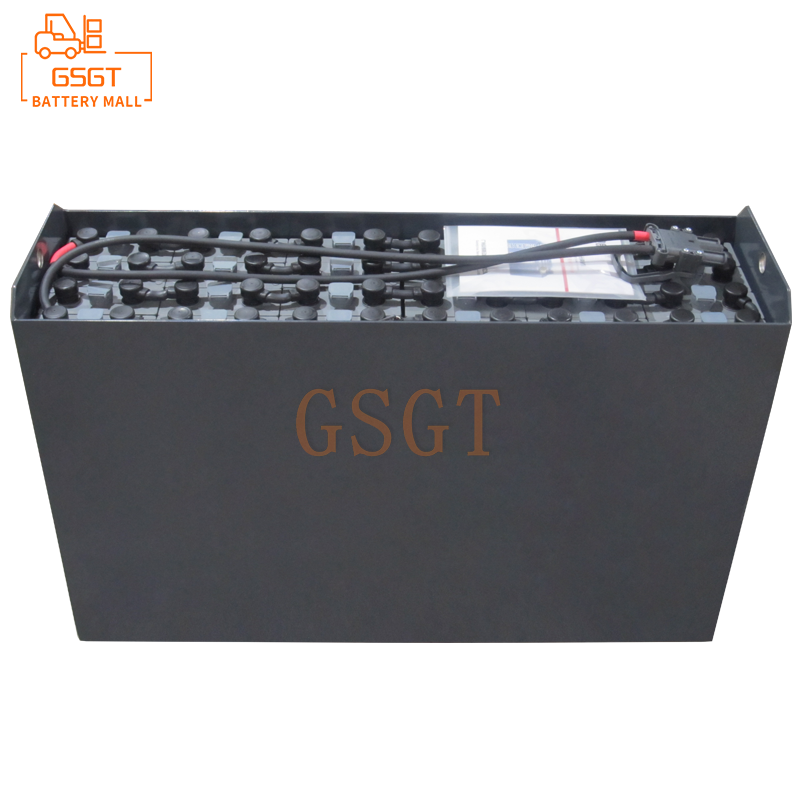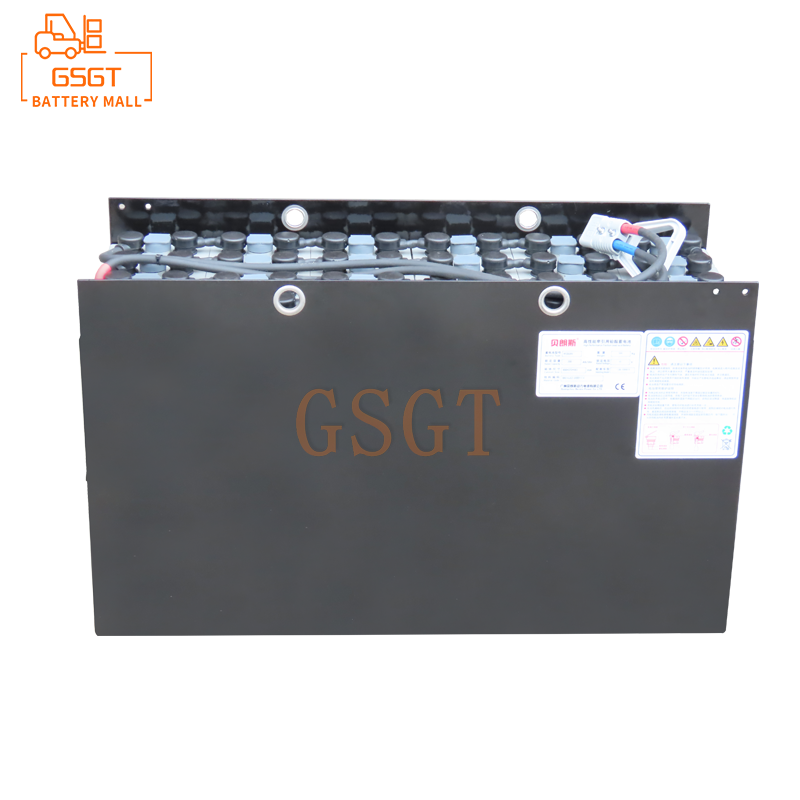Time:2025-07-17 14:58:46
Browse:11
During the operation of forklifts, lead-acid batteries play a crucial role. They provide the power source for forklifts, and the correctness of their installation and wiring directly affects the performance, service life and operational safety of forklifts. Therefore, it is extremely necessary to master the key points of installing and wiring lead-acid batteries for forklifts.
Preparations before installation
Before installing lead-acid batteries for forklifts, making thorough preparations is the foundation for ensuring a smooth installation process. First of all, carefully inspect the appearance of the battery to see if there are any cracked shells, leakage, bulges or other conditions. Once these problems are found, the battery must not be used under any circumstances to avoid potential safety hazards during installation and use.
Secondly, it is necessary to confirm that the model and specification of the battery match the requirements of the forklift. Different models of forklifts have specific requirements for parameters such as the voltage and capacity of the battery. If the parameters do not match, it will not only affect the normal operation of the forklift but also may damage the electrical system of the forklift.
In addition, prepare the necessary installation tools, such as wrenches and screwdrivers, and at the same time ensure that the installation site is well-ventilated and far away from fire and heat sources. Good ventilation can prevent the accumulation of hydrogen gas generated during the charging and discharging process of the battery, reducing the risk of explosion. Keeping away from fire and heat sources can prevent the battery from overheating and ensure installation safety.
Installation steps
Transport the battery
Forklift lead-acid batteries are quite heavy. When moving them, special lifting equipment or multiple people working together are required. It is strictly forbidden for a single person to move them by hand to prevent the batteries from falling and injuring people or damaging them. During the handling process, keep the battery stable, avoid violent shaking and collision, and prevent the leakage of electrolyte.
Place the battery
Place the battery smoothly into the battery compartment of the forklift, ensuring that the battery is placed in the correct position and matches the fixtures inside the battery compartment. When placing it, pay attention to the positive and negative terminals of the battery to prepare for the subsequent wiring.
Fixed battery
After the battery is placed properly, it should be firmly fixed in the battery compartment with special fixing bolts or clamps to prevent the battery from moving or shaking during the forklift's operation and driving. When fixing, pay attention to applying moderate force. It is necessary to ensure firmness without excessive force that may damage the battery casing.
Key points of wiring
Clean the terminal posts
Before wiring, use a clean cloth or sandpaper to wipe the battery terminals and the forklift terminal blocks to remove the surface oxide layer, dirt and grease, ensuring good wiring and reducing contact resistance. If there is any electrolyte residue on the terminals, it should be washed with baking soda water and then dried to prevent the electrolyte from corroding the terminals.
Connect the cable
When connecting cables, first connect the positive cable. Firmly connect one end of the positive cable to the positive terminal of the battery and the other end to the positive terminal of the forklift's electrical system. Then connect the negative cable. Similarly, connect the two ends of the negative cable to the negative terminal of the battery and the negative terminal of the forklift's electrical system respectively. This sequence of connecting the positive terminal first and then the negative terminal can prevent short circuits during the wiring process.
During the connection process, ensure that the cable joint is in close contact with the terminal post. Use a wrench to tighten the wiring bolts, but do not apply excessive force to avoid damaging the terminal post. At the same time, pay attention to the direction of the cable to avoid friction or compression between the cable and the moving parts of the forklift, and prevent damage to the cable insulation layer.
Check the connection status
After the wiring is completed, carefully check whether each connection part is firm and whether there is any loosening. You can gently shake the cable joint by hand to observe if there is any displacement. At the same time, check whether the positive and negative terminals are connected correctly to avoid reversing them. If it is found that the connection is not firm or the positive and negative poles are reversed, adjustments should be made in time.
Frequently Asked Questions and Answers
Question: After installation, it was found that the battery was getting very hot. What could be the reason?
Answer: Severe heating of the battery after installation may be caused by various reasons. Firstly, it might be that the wiring is not firm enough, resulting in excessive contact resistance. When current passes through, a large amount of heat is generated. In this case, it is necessary to recheck the wiring and tighten the wiring bolts. Secondly, it might be that the positive and negative terminals are connected in reverse, causing a short circuit. In this case, the power supply should be disconnected immediately and the positive and negative terminals should be reconnected correctly. In addition, if the battery itself has faults, such as internal short circuits, it can also cause severe heating. In such cases, the battery needs to be replaced.
Question: If the forklift fails to start after wiring, what could be the problem?
Answer: If the forklift fails to start after wiring, there may be the following reasons. One is that the contact between the terminal post and the cable joint is poor, resulting in the current not being transmitted normally. At this time, it is necessary to check the wiring part, clean the oxide layer and retighten the wiring bolts. The second is that the positive and negative poles are connected in reverse, causing the electrical system of the forklift to fail to work properly. The wiring sequence should be checked and corrected. The third reason is that the battery power is insufficient. It might be that the battery itself has run out of power and needs to be charged. It could also be that the charging system has malfunctioned and is unable to charge the battery. In this case, the charging system needs to be inspected and repaired.
Precautions
During the installation and wiring process, operators should wear protective equipment such as rubber gloves and goggles to prevent the electrolyte from coming into contact with the skin and eyes. In case of accidental contact with the electrolyte, rinse immediately with plenty of water and seek medical attention promptly.
After installation is completed, do not start the forklift immediately. First, check the battery level (for maintainable batteries). If the level is lower than the specified mark, add distilled water to the appropriate position. Be careful not to add electrolyte to avoid changing the battery concentration.
In addition, it is necessary to regularly inspect and maintain the wiring parts of the battery to check for any looseness, oxidation or other conditions, and deal with them in a timely manner to ensure that the lead-acid battery of the forklift is always in good working condition, extend its service life and guarantee the normal operation of the forklift.
In conclusion, the installation and wiring of lead-acid batteries for forklifts is a meticulous and crucial task. Every step must be carried out strictly in accordance with the requirements. Only in this way can the safe operation of the forklift and the good performance of the battery be ensured.

$800

$880

$3400

$1630

MESSAGE
Professional And Efficient
Security
Affordable Price
Professional Services